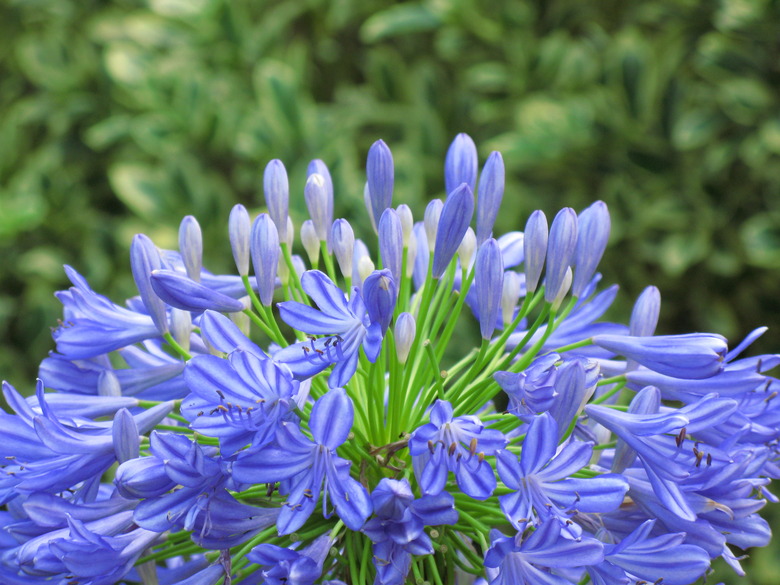How To Transplant Agapanthus
Things Needed
- Hand shovel
- Knife
- Garden forks
- Potting soil
- Peat moss
- Balanced fertilizer
- Water
- Gravel
- Container
Tip
Agapanthus needs to be divided and transplanted when flower production has decreased or stopped completely. After pulling the plant from the ground, divide the tubers in half with a sharp knife and re-plant one half in the original spot and the other in a new spot. This practice should be done in March, directly before the growing season begins.
Agapanthus, or "Lily of the Nile," produces long, spear-shaped leaves with tall purple, white–or most commonly–blue blooms in the spring and summer. The root system is shallow and tends to spread quickly wherever it is grown. Although agapanthus may take a long time to become properly established, it can easily overcome a garden space once it has. Typically, the plant will not produce flowers until its third year but will need to be divided and transplanted in the fourth year. Transplanting agapanthus creates prolific blooming and ensures that the plant will not overtake an area.
Step 1
Prepare the soil where the agapanthus will be transplanted. Dig a hole slightly larger than the one in which the agapanthus is currently sitting. Mix equal parts of soil, peat moss and a balanced fertilizer, and fill half the hole with it. If transplanting to a pot, layer the bottom with small gravel and fill the pot halfway with the mixture.
- Agapanthus, or "Lily of the Nile," produces long, spear-shaped leaves with tall purple, white–or most commonly–blue blooms in the spring and summer.
- If transplanting to a pot, layer the bottom with small gravel and fill the pot halfway with the mixture.
Step 2
Water the hole and soil mixture to eliminate any air trapped within the soil. Wait for the soil to settle.
Step 3
Using two garden forks, gently work them into the earth surrounding the agapanthus. Reach down and under the plant's roots with the forks and carefully lift it out of the ground. Gardening Tips 'n' Ideas describes the lifting motion as lifting the same way you would lift salad from a salad bowl.
Step 4
Shake the roots free of any excess soil, gently separate them and wet them with a light sprinkle of water.
Step 5
Place the plant in the new area, planting it no deeper than it had been originally. The only difference is that the hole or container should be slightly larger than the previous one.
- Water the hole and soil mixture to eliminate any air trapped within the soil.
- Shake the roots free of any excess soil, gently separate them and wet them with a light sprinkle of water.
Step 6
Fill the soil around the plant until just covered and lightly press the soil down. Water thoroughly. Wait for the water to drain and the soil to settle. Fill in any holes or exposed roots.
Step 7
Apply a balanced fertilizer around the edge of the plant, about 2 to 3 inches from the base. Continue this practice once every two weeks.
